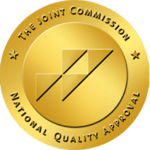Throughout the United States, Canada, and Western Europe, March is recognized as Self-Harm Awareness Month, which calls attention to the nearly two million self-injury cases that occur each year. Much like addiction, self-harm occurs across all ages, races, religions, and socioeconomic and education levels. There is a strong connection between self-harm and substance addiction.
At Westwind Recovery®, we recognize the importance of initiatives like Self-Harm Awareness Month. Our team of medical and mental health professionals is ready to help you address the underlying factors that may be causing you to self-harm. If you suffer from self-harm, it is important to know you’re not alone. Call us today at 855.340.8832 to learn more about how we can help.
What Is Self-Harm?
The vast majority of self-harm begins in adolescence but can continue into early adulthood and beyond. Self-harm, also referred to as self-injury, is statistically more common in adolescent girls and is frequently mistaken as attention-seeking in nature. The truth is that those who self-harm usually do so in secret and suffer in silence. While the causes of self-harm vary, common themes include trauma, abuse, neglect, depression, anxiety, and other mental health issues. Examples of self-harm include:
- Cutting
- Burning
- Head-banging
- Picking at skin
- Pulling out hair
- Consuming substances in excess
Treatment for Self-Harm
Self-harm involves deliberately hurting oneself, though not to a life-threatening degree. Many individuals will self-harm at some point in their lives and do so for a variety of reasons. People who self-harm generally report that they do so to alleviate extreme emotional pain or mental duress. At the other end of the spectrum are individuals who report that they generally feel very little emotion and engage in self-harm to “feel something.” Self-injury can increase endorphins creating a temporary sense of relief. However, it is only through professional mental health treatment programs that one can truly address this issue’s underlying causes.
Comorbidity refers to the presence of more than one disease or condition at the same time. While self-harm is not diagnosed as a mental health condition, those who engage in self-harm often struggle with an underlying mental health issue such as:
- PTSD
- Depression
- Anxiety
- Bipolar disorder
- Schizophrenia
As is true with all recovery the first, and often most difficult step to ending the cycle of self-harm is to acknowledge the behavior and ask for help. Treatment for self-harm needs to focus on not only the behaviors but the underlying causes. At Westwind Recovery®, we help clients navigate their treatment on a variety of levels and assist them in paving the way for long-term recovery at our luxury rehab center.
Mental Health Treatment and Self-Harm
There is a strong connection between mental health issues and substance abuse. Often a mental health issue can cause someone to become predisposed to developing a substance abuse issue. Likewise, individuals in the throes of substance abuse can develop mental health issues.
Mental health issues and substance abuse share common risk factors such as trauma, extreme stress, genetic vulnerabilities, and environmental influences. Westwind Recovery® is a dual diagnosis treatment center where clients can engage in a full range of personalized treatments, including:
- Family therapy
- Trauma therapy
- Cognitive-behavioral therapy
- Art therapy
- Music therapy
- Medication-assisted therapy
Contact Westwind Recovery® for Mental Health Counseling
Substance abuse is particularly concerning in individuals who self-harm because as levels of intoxication increase, inhibitions decrease, leading to more risky behaviors. Further, the effects of intoxication can intensify feelings of anxiety, depression, aggression, or even apathy, all of which can influence the desire to self-harm.
If you suffer from self-harm and/or substance addiction, Westwind Recovery® in Los Angeles, California, offers clients a full spectrum of treatment modalities. Call 855.340.8832 today to learn more about the programs we offer and how we can tailor them to your individual needs.



